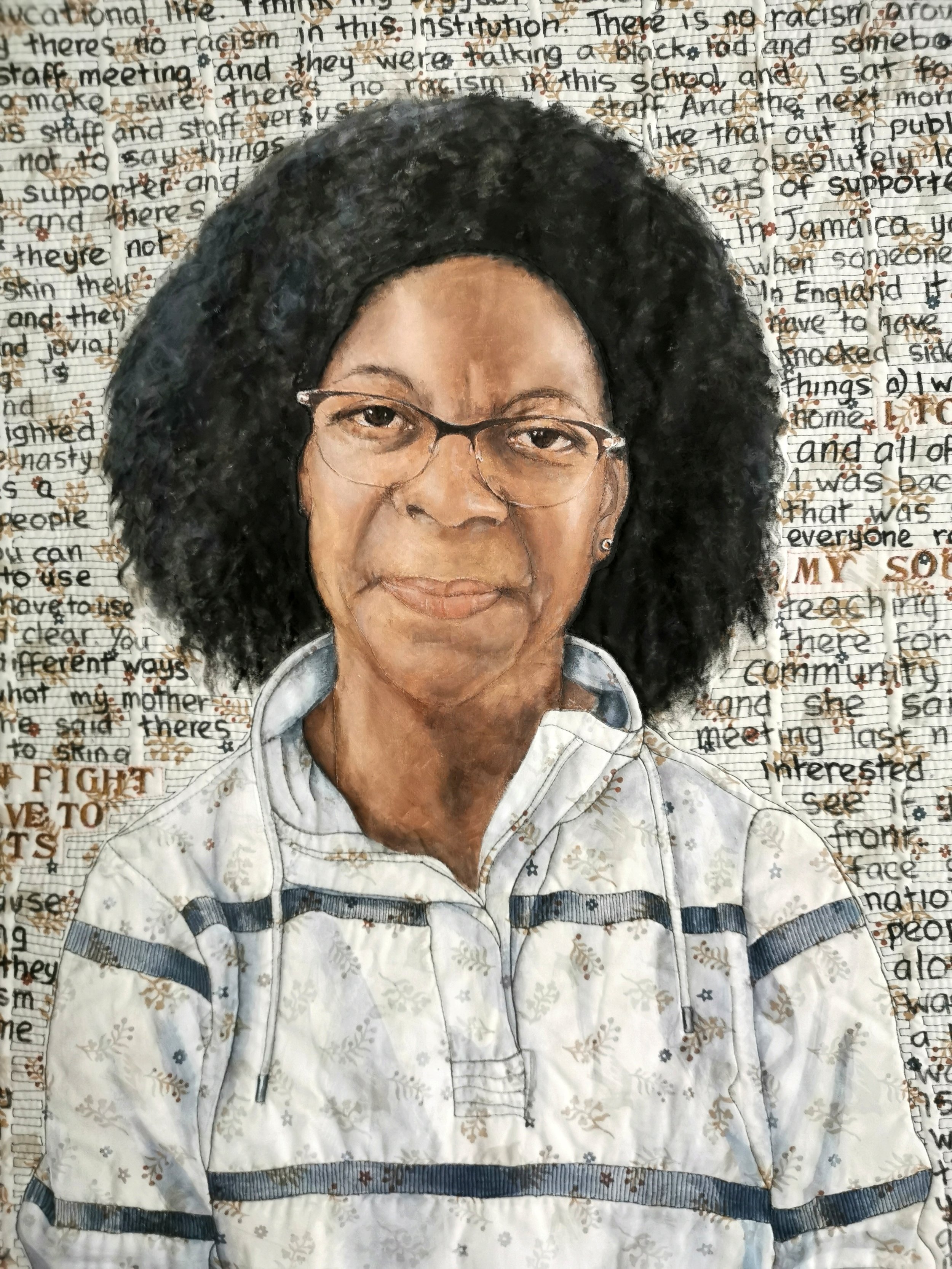In this quilt I’m aiming to show you the narrative of Marcia Watson, trying to give a voice to her struggles, resilience, and her own request for validation within the quilt. As the second of five Windrush quilts being produced for the Leamington exhibition in 2025, it serves as another testament to the enduring spirit of those who embarked on the journey to the UK, seeking new beginnings while confronting the harsh realities of racism and discrimination.
Arriving in the UK at the very young age of 8, her life from the start became a battleground against prejudice even from her teachers at school. Marcia’s own words are written on the background—a narrative of personal reflections and shared experiences drawn from the Warwickshire Windrush video which records histories of local families, which I transcribed for the quilt.
The centerpiece of the quilt is Marcia’s portrait, in acrylics and free machine stitch. To me, her gaze seems to reflect a lifetime of resilience, and the gentle tolerance of the beloved teacher she became; even her hands are poised in a gesture that speaks volumes of patience. There is a subtle yet profound detail in the piece—the same as all the Windrush quilts I’m making – a gradual fading of Marcia’s clothing into it's background which is a deliberate choice. The symbolism is there to evoke the passage of time, the erosion of memories, and the gradual assimilation of culture; a reminder of the complexities inherent in immigration.
It’s important to me that the creative process somehow extends beyond the confines of my own little world and involves people’s experiences and stories. As well as watching and transcribing the video, I was so lucky to be able to engage with the Leamington Windrush community, forging small connections and gathering inspiration from real-life encounters. I hope these interactions infuse the quilt with a profound sense of authenticity and empathy, honouring the voices of those whose stories deserve to be heard.
I guess I’m trying to bridge the gap between past and present, memory and reality, creating a space where the narratives of the Windrush generations can be preserved and celebrated. This is my tribute to Marcia Watson.

